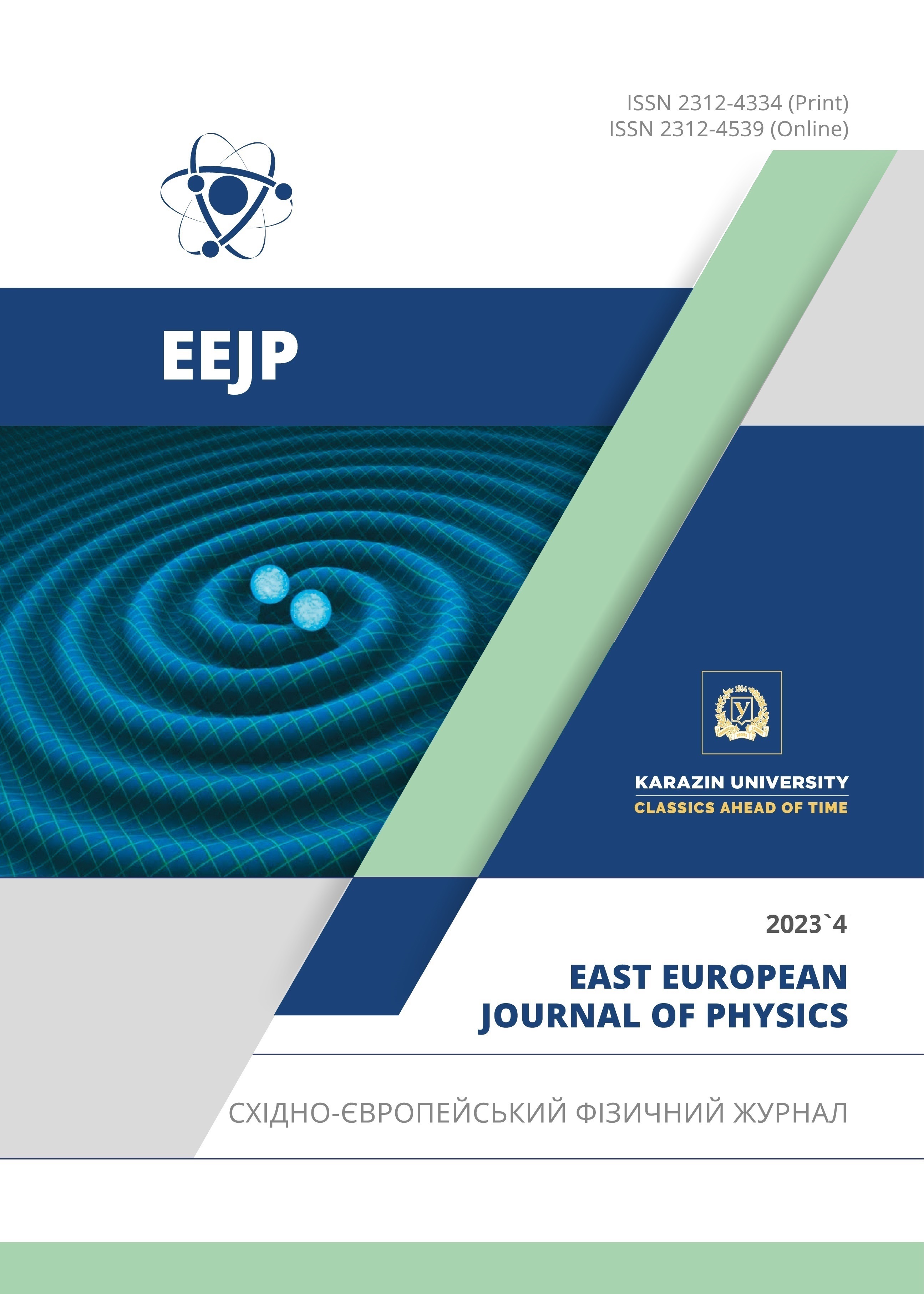Simultaneous Docking of Antiviral Drugs and Cyanine Dyes with Proteins Using Multiple Ligand Approach
Abstract
The protein-based nanosystems for targeted drug delivery of a wide array of substances, ranging from small drugs and therapeutic proteins to nucleic acids and genes, attract increasing attention due to their biocompatibility and biodegradability, extraordinary binding capacity for different ligands, accessibility from natural sources, effective drug protection and gentle encapsulation conditions. Due to the multitude of binding pockets and functional groups on the protein surface, these nanocarriers seem to be highly efficient multifunctional nanotheranostic systems that could incorporate both a therapeutic drug and a visualizing agent. This integration serves multiple purposes, including the regulation of drug release, monitoring the alterations at the target site in response to treatment, and offering crucial insights into the efficacy of the intervention in its early stages. The development of these advanced nanosystems necessitates a thorough comprehension of the potential interactions within these intricate systems. In the present study we assessed the potential of six trimethine and seven pentamethine cyanine dyes to serve as visualizing agents in the drug-protein-dye systems which include functionally significant proteins (cytochrome c, serum albumin, lysozyme and insulin and four antiviral drugs, viz. favipiravir, molnupiravir, nirmatrelvir and ritonavir. The ternary systems with the highest dye-protein surface shape complementarity were established for all groups of the examined cyanine dyes. The influence of the cyanine dye structure on the stability of the drug-protein-dye complexes was assessed. The obtained results indicate that the dye-protein affinity is not solely dependent on the length of the polymethine chain. It was found that the most prospective drug delivery systems containing the trimethines and pentamethines as visualizing agents are AK5-6-, AK5-8- and AK3-11-drug-albumin complexes.
Downloads
References
Md. I. Khan, M.I. Hossain, M.K. Hossain, M.H.K. Rubel, K.M. Hossain, et al., ACS. Appl. Bio Mater. 5, 971 (2022). https://doi.org/10.1021/acsabm.2c00002
J. Wang, Y. Li, and G. Nie, Nat. Rev. Mat. 6, 766 (2021). https://doi.org/10.1038/s41578-021-00315-x
X. Sun, J. Wang, Z. Wang, C. Zhu, J. Xi, L. Fan, J. Han, and R. Guo, J. Colloid Interface Sci. 610, 89 (2022). https://doi.org/10.1016/j.jcis.2021.11.189
E. Nance, S.H. Pun, R. Saigal, and D.L. Sellers, 7, 31 (2022). https://doi.org/10.1038/s41578-021-00394-w
T.P. Crowe, and W.H. Hsu, Pharmaceutics, 14, 629 (2022). https://doi.org/10.3390/pharmaceutics14030629
A.S. Ali, M.G. Alrashedi, O.A.A. Ahmed, I.M. Ibrahim, Polymers, 14, 2616 (2022). https://doi.org/10.3390/polym14132616
N.B. Kiremitler, M.Z. Kemerli, and N. KAyaci, et al., ACS Appl. Nano Mater. 5, 6029 (2022). https://doi.org/10.1021/acsanm.2c00181
C. Medina-Montano, I. R. Berti, R. C. Gambaro, M.J. Limeres, M. Svensson, et al., Pharmaceutics, 14, 1611 (2022). https://doi.org/10.3390/pharmaceutics14081611
M. Ferreira, L.L. Chaves, S.A. Costa Lima, S. Reis, Int. J. Pharm. 492, 65 (2015). https://doi.org/10.1016/j.ijpharm.2015.07.013
Y. Deng, X. Zhang, H. Shen, Q. He, Z. Wu, W. Liao, and M. Yuan, Front. Bioeng. Biotechnol. 7, (2019). https://doi.org/10.3389/fbioe.2019.00489
T. Alam, M.A. Ansari, S. Baboota, and J. Ali, Drug Deliv. Transl. Res. 12, 577 (2022). https://doi.org/10.1007/s13346-021-00958-x
H. Zhang, T. Fan, W. Chen, Y. Li, and B. Wang, Bioactive Materials. 5, 1071 (2020). https://doi.org/10.1016/j.bioactmat.2020.06.012
A.L. Martínez-López, C. Pangua, C. Reboredo, R. Campión, J. Morales-Gracia, and J.M. Irache, Int. J. Pharm. 581, 119289 (2020). https://doi.org/10.1016/j.ijpharm.2020.119289
A.O. Elzoghby, W.M. Samy, and N.A. Elgindy, Journal of Controlled Release, 161, 38 (2012). https://doi.org/10.1016/j.jconrel.2012.04.036
E. Kianfar, J. Nanobiotechnol. 19, 159 (2021). https://doi.org/10.1186/s12951-021-00896-3
C. Wen, J. Zhang, H. Zhang, Y. Duan, Foods. 11, 1701 (2022). https://doi.org/10.3390/foods11121701
S. Lee, T.C. Pham, C. Bae, Y. Choi, Y.K. Kim, and J. Yoon, Coord. Chem. Rev. 412, 213258 (2020). https://doi.org/10.1016/j.ccr.2020.213258
L. Xu, S.-B. Wang, C. Xu, D. Han, X.-H. Ren, X.-Z. Zhang, and S.-X. Cheng, ACS Appl. Mater. Interfaces. 11, 38385 (2019). https://doi.org/10.1021/acsami.9b11263
Y. Wang, H. Igbal, U. U.-Rehman, L. Zhai, Z. Yuan, A. Razzaq, M. Lv, et al., J. Drug Deliv. Sci. Technol. 79, 104072 (2023). https://doi.org/10.1016/j.jddst.2022.104072
O. Zhytniakivska, U.K. Vus, V. Trusova, and G. Gorbenko, East. European Journal of Physics, 3, 585 (2023). https://doi.org/10.26565/2312-4334-2023-3-69
E. Pettersen, T. Goddard, C. Huang, G. Couch, D. Greenblatt, E. Meng, and T. Ferrin, UCSF Chimera – a visualization system for exploratory research and analysis, J. Comput. Chem. 25, 1605–1612(2004). https://doi.org/10.1002/jcc.20084
P. Csizmadia, in: Proceedings of ECSOC-3, the third international electronic conference on synthetic organic chemistry, (1999), pp. 367-369. https://doi.org/10.3390/ECSOC-3-01775
M.D. Hanwell, D.E. Curtis, D.C. Lonie, T. Vandermeersch, E. Zurek, and G.R. Hutchison, J. Cheminform. 4, 17 (2012). https://doi.org/10.1186/1758-2946-4-17
D. Schneidman-Duhovny, Y. Inbar, R. Nussinov, and H.J. Wolfson, Nucl. Acids. Res. 33, W363 (2005). https://doi.org/10.1093/nar/gki481
M.F. Adasme, K.L. Linnemann, S.N. Bolz, F. Kaiser, S. Salentin, V.J. Haupt, and M. Schroeder, Nucl. Acids. Res. 49, W530 (2021). https://doi.org/10.1093/nar/gkab294
E.F. Pettersen, T.D. Goddard, C.C. Huang, G.S. Couch, D.M. Greenblatt, E.C. Meng, and T.E. Ferrin, J. Comput. Chem. 25, 1605 (2004). https://doi.org/10.1002/jcc.20084
Copyright (c) 2023 Olga Zhytniakivska, Uliana Tarabara, Kateryna Vus, Valeriya Trusova, Galyna Gorbenko

This work is licensed under a Creative Commons Attribution 4.0 International License.
Authors who publish with this journal agree to the following terms:
- Authors retain copyright and grant the journal right of first publication with the work simultaneously licensed under a Creative Commons Attribution License that allows others to share the work with an acknowledgment of the work's authorship and initial publication in this journal.
- Authors are able to enter into separate, additional contractual arrangements for the non-exclusive distribution of the journal's published version of the work (e.g., post it to an institutional repository or publish it in a book), with an acknowledgment of its initial publication in this journal.
- Authors are permitted and encouraged to post their work online (e.g., in institutional repositories or on their website) prior to and during the submission process, as it can lead to productive exchanges, as well as earlier and greater citation of published work (See The Effect of Open Access).








